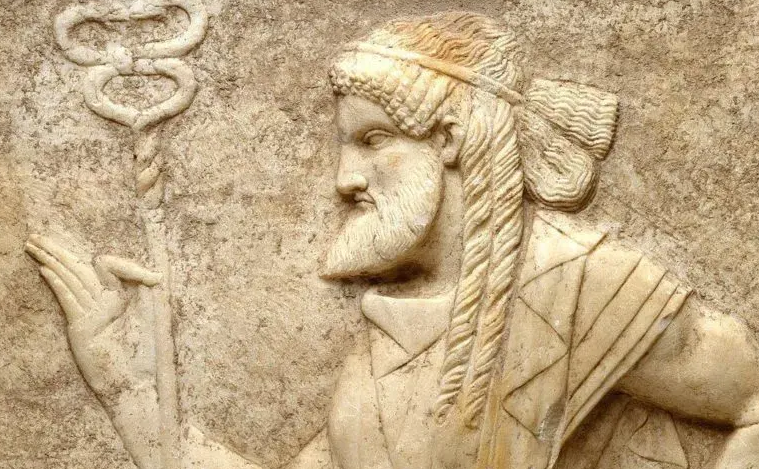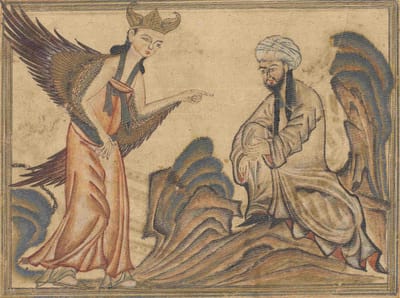This essay originally appeared, in a slightly different version, as the editorial to Volume 2 of the print edition of Sacred Web in December 1998
(2 Enoch, XLVIII. 5)
The importance of literacy in the conventional sense of the ability to read, write, and compute, is taken for granted nowadays, and there are many other forms of literacy that exist, ranging from technological and computer literacy to media and consumer literacy. It is also generally accepted that these various forms of literacy enable individuals to better function in modern societies.
From the perspective of Tradition, however, there is a more basic and indispensable form of literacy whose importance is mostly overlooked and largely unacknowledged by the modern world. This is spiritual literacy. The importance of spiritual literacy is founded upon principles of Traditional metaphysics according to which Reality is perceived as an integrated whole, manifesting as a spiritual continuum within which we ourselves participate.
While spiritual literacy, similar to other forms of literacy, also has its utilitarian justification, in that it connects utility to spiritual purpose, its importance is not merely pragmatic. Rather, its significance lies in the fact that it is the spiritual perspective alone that illumines the full spectrum of meaning for man, endowing human relationships with an ethical dimension as well as conferring on each individual a sense of purpose or telos. The true justification for spiritual literacy resides in understanding that the realization of Reality is the true métier of man, a project which cannot be undertaken or achieved without faith and the development of the spiritual faculty.
To speak of existence is at a certain level to speak of contingency, and to situate man in any given manifestation is to invoke a necessary correspondence between context and contingency. From one perspective, each creature exists at its own level, bounded by its own context and its own set of contingent circumstances. From another, man is a “fragment of the Absolute,” and all creation is theophany, radiating through multiple levels of contingent reality from a Center or Origin which is Itself Absolute and to which creation, and man, uniquely, are connected.
To define man within any given context is therefore to evoke two outlooks, one fragmentary and discontinuous, the other integrated and continuous, which, though seemingly mutually exclusive, coexist from the perspective of Traditional metaphysics. And it is in this coexistence, in the two worlds in which we must live at the same time, in the intersection between the vertical and horizontal dimensions of reality, that the genius of man and the true project of mankind resides.

It is from the name of the Greek messenger god, Hermes, the god of boundaries, to whom was given the power of planimetric movement between the different worlds, that we derive the term hermeneutics, designating generally that which is concerned with the interpretation of texts. It is in the full sense of man's contextuality that the term “text” is to be understood, in the Muslim sense of ayat or the Christian sense of logos, in which creation is a continual ontological utterance whose meaning we ourselves, as divine articulations, embody.
In this sense, the notion of the text as “sign” is inadequate to convey the full scope of its ontological meaning insofar as the term merely denotes the “other” as an object without containing a participatory dimension that includes ourselves. Similarly, to speak of interpretation as “cognitive understanding” is inadequate to convey the experiential dimension of meaning that goes beyond concepts or categorical imperatives. In Traditional terminology, therefore, the text of Revelation is understood ontologically as symbol and archetype, that which connects the “cipher” to its Center and Origin; while interpretation is understood as the participatory experience of that which is “de-ciphered.” Traditional hermeneutics is therefore a means of integrating the “two worlds,” of uniting knowledge and being.
Modernism… is a doomed enterprise, as futile as attempting to arrive at the ever-receding horizon. … Faith in the Absolute Reality of which all the ancient traditions speak is therefore the central prerequisite for spiritual literacy, the Jacob's Ladder that connects us to heaven.
In a multi-dimensional world, one's level of engagement with reality determines the quality of one's experience. It is in this respect that Tradition and Modernity part company. The approach of Modernity, or more precisely the ethos of Modernism, which proceeds outwards from man, as its egoic center, is to believe that the merely human can define the Infinite and know the Unknown, thereby denying that which is Transcendent, and limiting reality to that which is contingent. This is a doomed enterprise, as futile as attempting to arrive at the ever-receding horizon. By contrast, Tradition, which proceeds outwards from God (the axiomatic Supernal Center and Origin of all creation), perceives reality as integrated, and knowledge as derived from the Transcendent, which manifests its grace through the outer and objective pole of Self-Revelation, and the interior and subjective pole of the Intellect, these being complementary.
From the Traditional perspective, knowledge and its objects are not simply human entitlements, to be had for the taking, but rather are divine gifts to be justified by the receiving. Man is enjoined by Tradition to approach knowledge reverentially, mindful of its sacred nature and of its underlying reconnecting purpose that enables him to retrace his path centripetally to the ultimate ground of reality.
The faculties of man valued by Modernity (such as reason, logic and sense perception) are each viewed by Tradition as competent within their own limited realms, but as subordinate to the higher faculty of the Transcendent Intellect, which alone has Hermetic access to the celestial realms from which all things originate and to which all things return.
The difference between the outlooks of Tradition and Modernity lies in their different orientations, which account for their different interpretations of the world. By its denial of the Transcendent, the orientation of Modernity is towards the periphery, the Center being concealed from it by the opacity of the metaphysical Veil, which thereby functions as idol. By contrast, the orientation of Tradition is towards the Center (located simultaneously both beyond and within), which reveals itself through the translucence of the Veil, which functions as icon. In each case, the Veil confronting the seeker is the same, but the way in which it is perceived is different. This difference is a matter of receptivity, of faith, whose denial constitutes the denial of meaning itself.
Faith in the Absolute Reality of which all the ancient traditions speak is therefore the central prerequisite for spiritual literacy, the Jacob's Ladder that connects us to Heaven. It is faith that holds open the door for the functioning of grace and deepens all the faculties of perception, including desire itself, transmuting knowledge into love.
But in order for the seeker to ascend the Ladder, spiritual hermeneutics requires that such faith be marked by a quality of critical openness that keeps the eyes alert at every moment, an awareness that guards against the lapse into forgetfulness. And therein resides the mystery of the Divine Invocation, the dhikr or Om, the “re-minding,” or the Word that God eternally utters, which ultimately is none other than our very Self.

